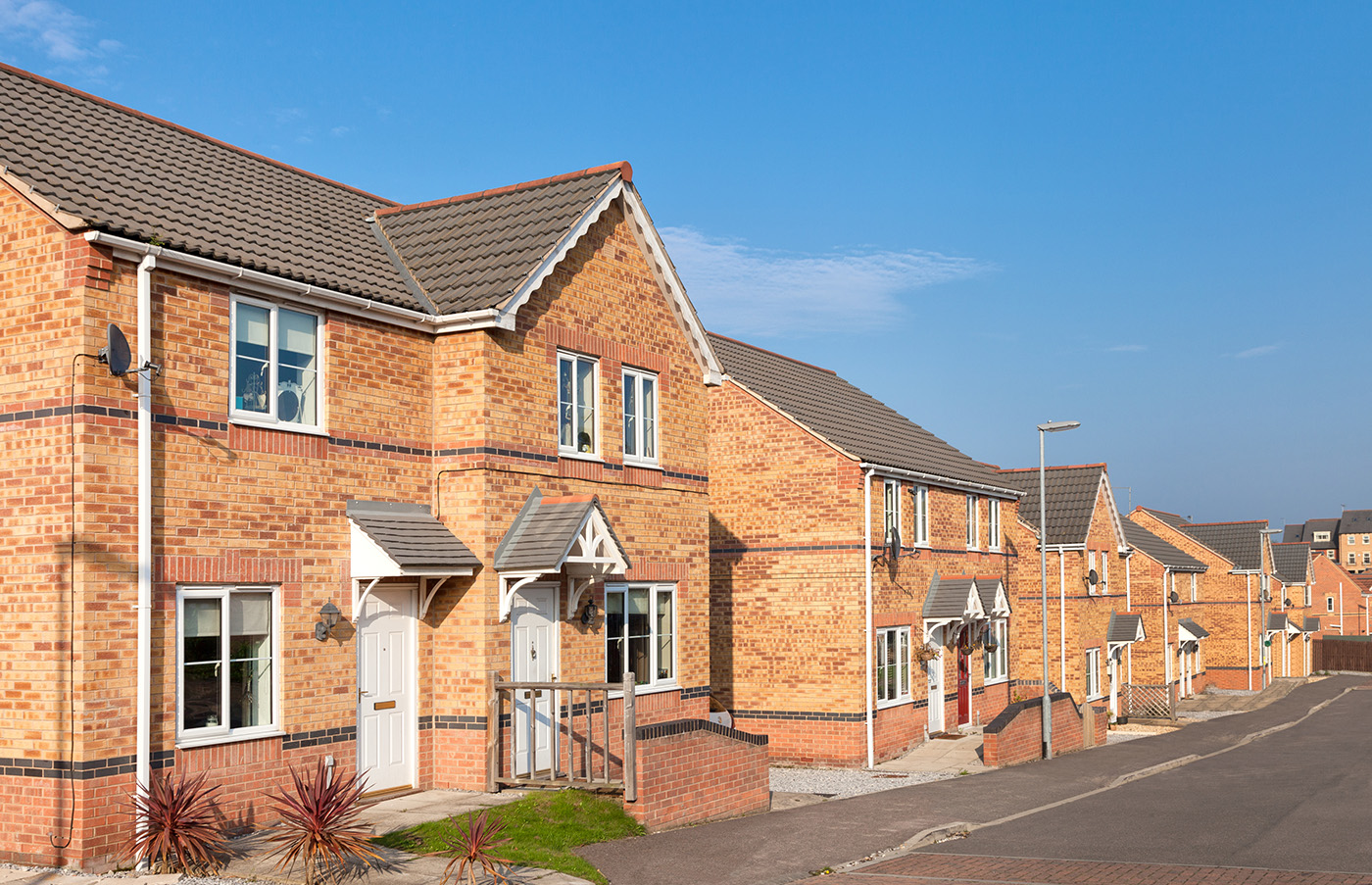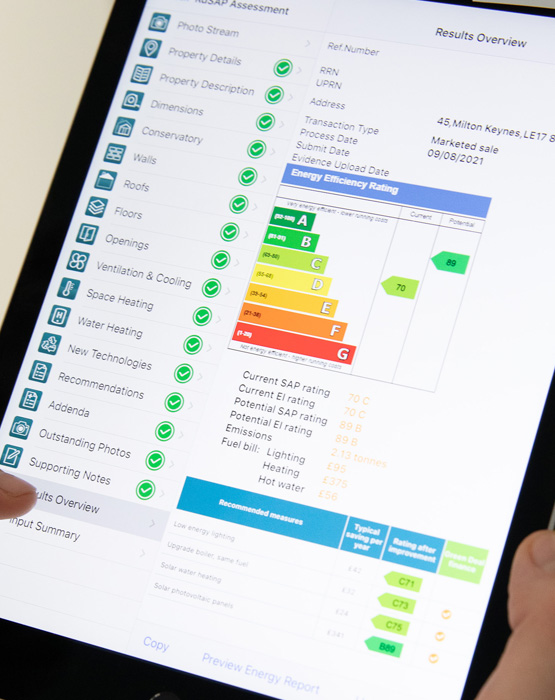
The Home Energy Model
The Home Energy Model is a government calculation methodology designed to assess the energy performance of homes across the United Kingdom. The model is designed to replace the current methodology used by the government; the Standard Assessment Procedure (SAP).
Like SAP, the Home Energy Model will underpin a large number of government policies, making it of vital importance to the delivery of the government’s housing and climate policies. As described in the government consultation of the same name, it is ‘a new name for a new methodology’.
When was the Home Energy Model Announced?
The Home Energy Model was announced by government in December 2023. This announcement formed part of three consultations focussed on the Home Energy Model and the Future Homes and Buildings Standards. The two consultations for the Home Energy Model included:
- The Home Energy Model: Replacement for the Standard Assessment Procedure (SAP): the methodology which will be used as a replacement to SAP to assess the energy performance of homes.
- The Home Energy Model: Future Homes Standard Assessment: the methodology which will be used to demonstrate that new dwellings comply with the Future Homes Standard. It will replace the SAP version 10.2 for the energy rating of dwellings.
The above consultations closed for response on Wednesday 27th March 2024 and now await a response from government.

What Is SAP?
The Standard Assessment Procedure (SAP) is the methodology used by the UK government to estimate the energy performance of homes. The methodology has 2 main uses:
- to demonstrate compliance of new homes with Part L of the Building Regulations.
- to generate Energy Performance Certificates (EPCs) for all homes.
SAP plays a key role in developing, implementing and monitoring government policies and is used across the whole building industry.
Why is the Home Energy Model replacing SAP?
As noted in the government consultation, SAP can be seen as simple in comparison to today’s industry standards. This is because it was initially designed for an on-site assessor using basic tools such as a pen and paper. Although it has gone through various updates over the decades, its core structure remains the same.
The Home Energy Model provides the government with the opportunity to start from a clean slate and rethink the structure of the methodology to ensure that its different use cases are clearly presented and separated. The key aim of the project is to create a new methodology that is ‘fit for the future’, meaning one that directly supports the industry, policy and research and recognises buildings that are ‘net zero ready’.
How will the Home Energy Model differ from SAP?
In order to achieve the above aim, the government states that it is necessary to modify both the calculation methodology and the related ecosystem (the environment and format in which it is made available). The various changes are presented in the consultation as follows:
Changes to the Calculation Methodology
The proposed changes to the Calculation Methodology include:
- Increasing the time resolution
The current version of SAP undertakes calculations at a monthly time step. In contrast, the Home Energy Model will simulate homes at a 30-minute time resolution, meaning that every half-hour of the stimulated year is evaluated. This change should result in a number of key benefits, including fewer constraints, improved presentation of heat pumps and validation against dynamic simulation and monitoring data.
The increased time resolution may result in the model taking longer to run. However, the government aims to limit any potential drawbacks in the next phase of the project.
- Building strong foundations on international standards
Since its introduction, SAP has been based on the Building Research Establishment (BRE) Domestic Energy Model (BREDEM). BREDEM is intended to be compliant with current European Standard covering the calculation of the energy performance of buildings.
For the Home Energy Model, the government intends to move away from BREDEM and deviate from the European Standards in places where there is evidence or a basis for doing so.
- A modular architecture
Since its initial introduction, SAP has gone through various iterations and has been expanded over time to incorporate more functionality. However, according to the government, this has led to ‘a lack of structural clarity’.
In contrast, the Home Energy Model reference code is constructed of a modular framework, meaning that it is flexible and adjustable. The boundary of each module is defined by a fixed set of inputs and outputs that are exchanged with other modules. This means that they should not typically vary when the inner workings of the module change.
The noted benefits of this include greater ease of use and more flexibility for continuous improvement.
- Modelling energy flexibility and smart technologies
As a result of the Home Energy Model running as a half-hourly simulation, it has the ability to accept varying profiles. This creates the potential to take unique values for every half-hour of the year, allowing for realistic modelling of the interactions between variable supply and demand and enabling accurate measurement of the benefits from storage and load shifting technologies and behaviours.
The resulting benefits of this change include greater energy flexibility and the ability to adapt and regulate energy use, generation, and/or storage in response to signals from the home or the wider energy system.
Changes to the Ecosystem (Environment)
The proposed changes to the ecosystem include:
- An open-source methodology.
One of the principle aims of the Home Energy Model project is to increase the transparency of the methodology. To achieve this, the government aims to publish the codebase; meaning that all changes to the model will be visible before they are formally implemented.
- Changes to the delivery model and provision of software.
At present, the SAP methodology is owned by the government and made publicly available as a PDF download from contractor’s websites. For the Home Energy Model, the government proposes to include the provision of a home energy performance calculator, wherein the government provides a centralised and cloud-based version of the calculation engine that software providers can build their own user interfaces around.
- A revised database of product characteristics.
In the next stages of development, the government aims to rebuild the Product Characteristics Database (PCDB) from the underlying test data and to add new classes of products. Once the model is live, the product performance data will be stored in a database that is separate from the core engine.
- Recognising new technologies in the Home Energy Model.
The project looks at how the current format recognises new technologies, noting a number of key issues, including lack of transparency and long timeframes. Ahead of the model going live, the government intends to fully integrate all existing technologies into the model and PCDB.
The approach for recognising new technologies in the Home Energy Model is still in the early development stage. However, the government intends to adopt the following principles:
– Increased transparency
– Open research
– Integrity
– Continuous evaluation
– Greater integration
What is certain, is that the proposed centralised delivery model will enable new technologies to be recognised in the core engine on a more frequent basis.
- Using ‘wrappers’ to distinguish different use cases.
One of the core aims of the project is to clarify and separate the different purposes and functions. This is to be achieved through the use of ‘wrappers’, i.e. a piece of code that wraps around other program components and calls on them as part of its operation.
For the Home Energy Model, a wrapper will define the standardised inputs and user inputs required to specify the model, as well as define the outputs that the model will provide. This means that wrappers can make other pieces of code easier to use, without modifying them. As present, the consultation provides two wrapper examples, including the Energy Performance Certificate (EPC) Wrapper and Future Homes Standard (FHS) Wrapper.

How will it impact Energy Performance Certificates?
The Home Energy Model project will not change the Energy Performance Certificate (EPC) itself. However, the government is working on proposals to improve aspects and areas relating to EPCs, such as the performance metrics that they display.
For the Home Energy Model, the government is developing an EPC Wrapper; a separate software package that will wrap around the core engine. The wrapper will specify the inputs to the core engine that are needed for an EPC assessment, as well as process the outputs of the core engine into the form needed for the certificate.
For existing dwellings, the wrapper will take on the same function that Reduced data SAP (RdSAP) has performed in the past, such as specifying what assumptions are to be used if detailed design information is unavailable.
Development of the EPC wrapper for the model is due to start in the next phase of development.
What are the Timelines for Implementation?
The Home Energy Model in still under development at this stage. The first ‘live’ version of the model is planned to be implemented alongside the Future Homes Standard in 2025.
Ahead of this implementation date, the government aims to:
- Publish Government Responses to the Home Energy Model Future Homes Standard (FHS) assessment wrapper consultations in 2024.
- Consult on the EPC wrapper methodology in 2024.
- Develop further features, including all technologies currently featured in SAP 10.2, and all existing Appendix Q technologies.
- Rebuild the Produce Characteristics Database (PCDB).
- Undertake further validation to ensure the model is as robust as possible.
Further resources
For more information and to view the government consultations, please click the following links:
Home Energy Model: replacement for the Standard Assessment Procedure (SAP): https://www.gov.uk/government/consultations/home-energy-model-replacement-for-the-standard-assessment-procedure-sap
Home Energy Model: Future Homes Standard assessment: https://www.gov.uk/government/consultations/home-energy-model-future-homes-standard-assessment
